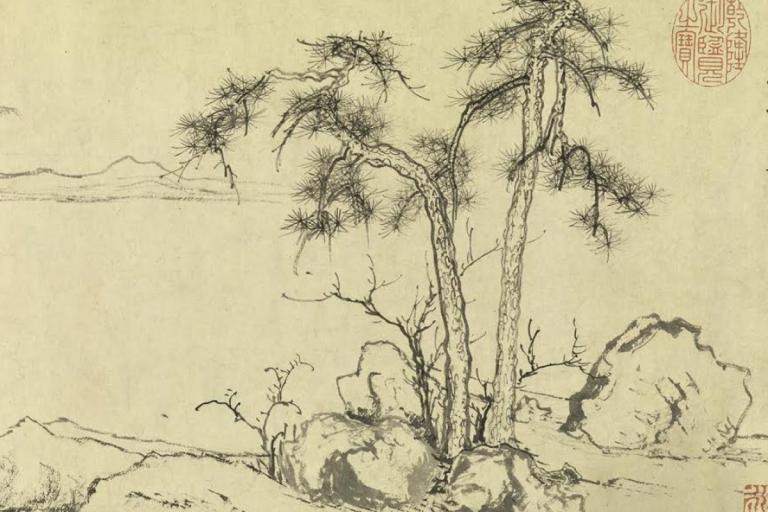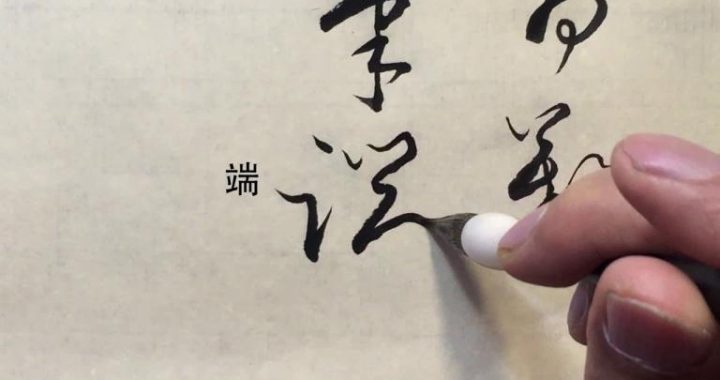Depicting Both Ancient and Contemporary Figures
7 min readFigure paintings among Chinese paintings attempt to depict figures in both form and spirit, often manifest personalities through playing up the environment, atmosphere, posture and movement, and emphasize”vividness
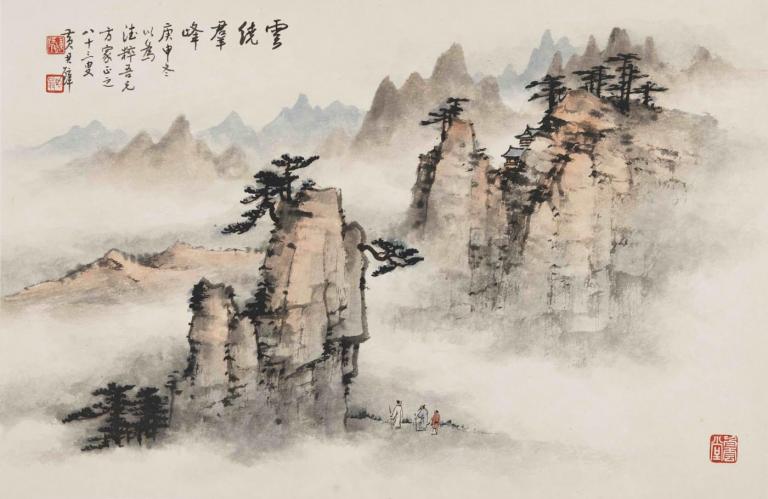
The oldest Chinese independent paintings existing today are two silk paintings of the Warring States Period unearthed from a Chu tomb in Changsha, Hunan-A Lady Phoenix and Dragon and A Man Riding a Dragon. a Lady, Phoenix and dragon shows the visual characteristics of upper-class women in the chu state-the posture of the lady wearing a long dress with broad sleeves is graceful and elegant. The lines used as a means of shaping images are simple and smooth and the thick, thin curved and straight parts are properly treated proving the traditional means of shaping images mainly through lines laid a foundation for Chinese painting before the Warring states Period. A Man Riding a Dragon depicts a middle-aged man standing sideways, wearing a tall hat and a long robe and driving a boat-shaped dragon under a canopy. Three ribbons drift in the wind and the man ‘ s clothes move along the wind looking quite lively. The second silk painting was created a little later than the first one and is more mature artistically. The former only highlights the shape and contour, giving people a sense of flatness the latter combines the inner contour and the outer contour making the man look three-dimensional to some extent. Besides, the lines are more vigorous and smoother, and there are light colors such as gold, white and pink. It is the earliest work discovered to use this painting technique up till now
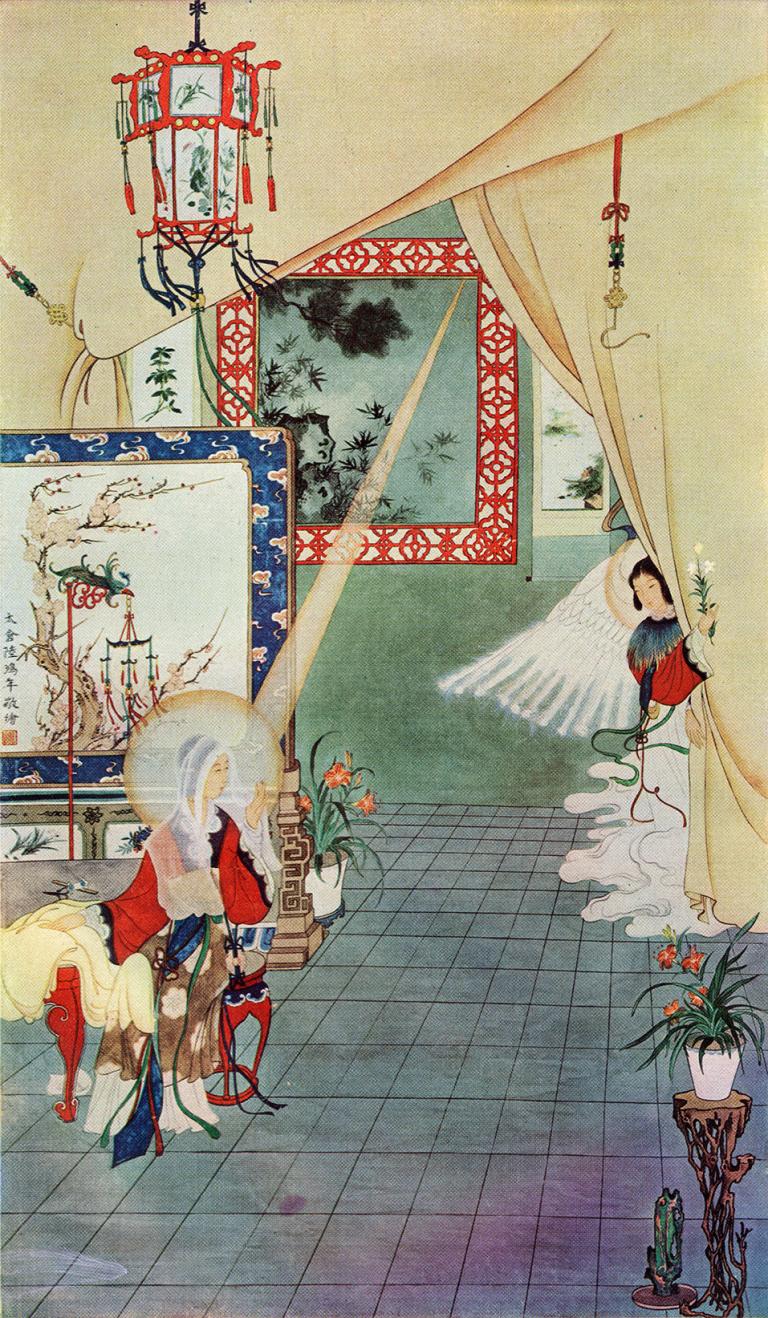
The Wei Dynasty the Jin dynasty and the northern and Southern Dynasties batch of painters mentioned into the annals of history emerged in this period. ns rstrepresent the dawn of a new era in China’s painting history. On the one hand, the fir not only proves that painters can also become famous, but also shows that art and artists received recognition and attention from the society. On the other hand, mature painting theories emerged in this period, showing a lot of Chinese painting works had been accumulated and elevated as the basis of theories eastern Jin painter gu kaizhi (c. 346-407) made outstanding achievements in both aspects. The most famous work of gu Kaizhi is ode to the goddess of the luo river created according to the article Ode to the Goddess of the Luo river by cao Zhi(192-232). There is a sad love story about it. a woman with the surname of Zhen loved by cao zhi was taken away by his elder brother Cao Pi (187-226) Before long Cao Pi ascended the throne and zhen became the queen, but she was always cheerless, was treated by Cao Pi coldly later and died in solitude. Cao Pi gave the pillow with engraved jade and gold ribbons leftby Zhen to Cao Zhi, and Cao Zhi returned to his fief with this pillow. On the way, he saw Zhen come to see him in a dream, so he wrote the rhapsody missing Zhen, laterrenamed ode to the goddess of the luo river gu kaizhi’s ode to the goddess of the Luo river follows the plot of cao zhi’ s ode to the goddess of the luo river Cao Zhi left the capital to return to his fief, he got off the carriage for rest beside the Luo River on the way, the Goddess of the Luo river appeared and walked on water, neither close nor far away, and the Goddess of the Luo river finally left. Cao Zhi was helpless, and he was separated from zhen forever and never saw her again the goddess of the Luo river depicted by Gu Kaizhi is gracefuL, dimly discernible, charming and touching The shape is elegant like a startled swan and graceful like a swimming dragon”. The figures in the painting are well arranged, and the plot changes and alternates naturally in different time and space. Composed with outstanding painting techniques, it reputed as one of the ten famous Chinese paintings handed down from ancient times Gu Kaizhi not only was good at painting, but also handed down classic paintingtheories. He wrote in On Painting, The most important thing in painting is not depiction of beautiful limbs, but depiction of lively eyes. He thought careful depiction of “a hand plucking five strings”was difficult, but depiction of “eyes following wild geese on their homeward flight”was more difficult still, because the latter involved people’s mental states and psychological activities. He clearly put forward the concept of depicting the spirit through the form”to attain the wonderful state of unity of form and spirit. His theories exerted great influence on the creation of Chinese paintings and the development of painting aesthetics in later ages In the Tang Dynasty, Chinese painting became fully mature, and figure painting underwent great development in particular. In the feudal society, imperial power was supreme. Emperors’ imposing manner was self-evident but the outstanding tang painter Yan Liben(c. 601-673) manifested emperors imposing manner with paintings handed down to later ages His representative works include emperor taizong Receiving the tibetan envoy the thirteen emperors etc Emperor Taizong Receiving the Tibetan Envoy depicts the political marriage between Princess Wencheng and emperor of tubo songtsan gampo arranged by Emperor Taizong of the Tang dynasty(598-649) in the 15 year of the Zhenguan Period(641). The person on the right sitting on an imperial carriage surrounded by maids is Emperor Taizong of the Tang Dynasty, showing his great talent and bold strategy; the person on the left is the wise and humble Tubo enjoy Blon-stongbtsan and his attendants being introduced to Emperor Taizong of the tang Dynasty by a protocol officer. This work manifests friendly exchange between the central regime of the tang Dynasty and the remote ethnic group with important historical value Meanwhile, the successful shaping of the figures and personality traits is also an outstanding achievement in figure painting creation The Thirteen Emperors depicts thirteen emperors from the Eastern Han and Western Han dynasties to the Sui Dynasty.
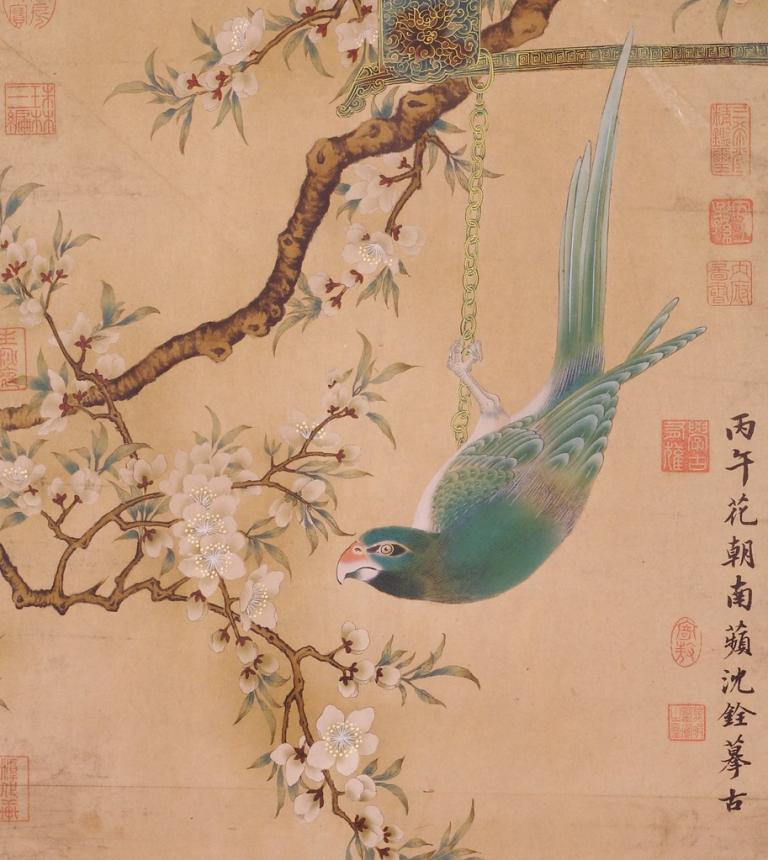
The painting does not have a backgroundsetting off the emperors or a linking plot, but focuses on depicting the emperors different physical features to manifest their different temperaments and expose their different mental states, e.g. the depiction of Emperor Wudi of the Jin Dynasty Sima Yan(236-290) fully shows the imposing image of this emperor who reunited china after the Three Kingdoms Period. The Thirteen Emperors with no background or plot depicts the figures per se, demonstrating the painter’s superb skills Seo, There is a saying about figure painting techniques: “In Cao’s paintings, clothes m wet; in Wu’s paintings, ribbons drift in wind It refers to two different modes of depicting clothes wrinkles in ancient figure paintings. These two different painting techniques also represent two painting styles. Specifically, in Cao’s paintings, clothes seem wetrefers to the painting style of northern Qi painter Cao Zhongda, who mostly drew clothes wrinkles with thin and tight lines vigorously, making the clothes seem to cling to human bodies as if soaked in water in Wu’s paintings ribbons drift in wind”refers to the painting style of Tang painter Wu daozi (c 680-759), who created a fluctuating and visually intermingled painting method to draw curvedgraceful lines, making people’s sleeves and ribbons tend to drift in the wind, enhancing the three-dimensional appeal of the depicted objects and highlighting human body curves
Night Revels of Han Xizai by Gu Hongzhong(c. 910-980) who lived in the Southern Tang Dynasty in the Five Dynasties Period is an epoch-marking famous figure painting in China’s painting history this painting in the form of a long scroll depicts the scene of a night banquet held for guests by Han Xizai (902-970), an official of the Southern Tang dynasty. The whole painting with Han Xizai as the center consists of five parts listening to the pipa, watching dancers, taking a rest, playing string instruments, and seeing guests off. These parts are both independent and integrated Through carefu observation, Gu Hongzhong vividly depicted the five scenes and the smiling faces and voices of more than 40 people. The lithe and graceful singers and dancers, the wine cups and chips lying disorderly and the people talking loudly and happily in the painting highlight Han Xizai’s preoccupied and cheerless mental state, and vividly portray his strategy of avoiding the emperor’s suspicion with women and songs and his complicated inner world.In terms of artistic treatment,this painting adopts thetraditional composition mode,and breaks from the concept of time,putting activities of different times together despite the complicated plot and numerous characters the host and guests are arranged orderly,the complex and simple parts are arranged appropriately,and different scenes are ingeniously and naturally separated with objects such as screens,tea tables and beds,giving people both a sense of connection and a sense of separation.These independent parts form a complete scroll.
After the Song Dynasty,figure painting was less popular than landscape paintingand flower-bird painting,and tended to decline perhaps because the whole feudal society began to decline.Many painters retired from the world,expressed their feelings by depicting landscapes,flowers and birds,and gave little attention to figure paintings directly reflecting real life.Nevertheless,there were also excellent 2 depicting occurrences in human life.In short,the result was that there were very fev figure paintings such as Portrait of vimalakirti by Li Gonglin(1049-1106)in the Song Dynasty,Arhat in Red robe by Zhao mengfu(1254-1322)in the Yuan dynasty Portrait of Tao Yuanming by Wang Zhongyu in the ming Dynasty and Amitayus Buddha by Ding Guanpeng(1736-1795)in the Qing Dynasty
